When the low season hits Thailand between May and October, most travellers head for the islands or avoid the country entirely in fear of monsoon downpours. But savvy explorers know that there’s a secret side to Thailand that thrives in the rain: its mountain villages.
Think misty sunrises over green terraced fields, cosy cabins surrounded by cloud forests, and piping hot bowls of local noodle soups eaten with a view. In these high-altitude hideaways, the rainy season doesn’t ruin the experience; it elevates it.
1. Ban Rak Thai, Mae Hong Son
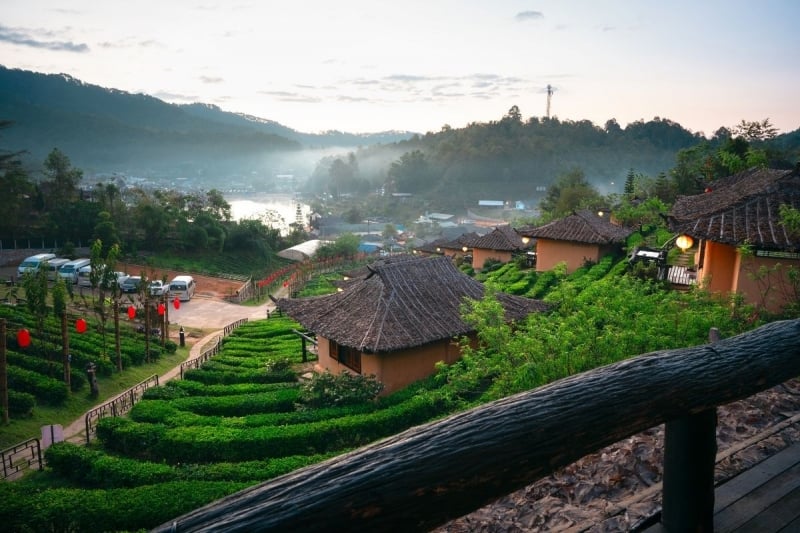
Image credit: Bebe Istrate’s Images via Canva Pro
Nestled right on the Thai–Myanmar border in Mae Hong Son province, Ban Rak Thai feels worlds away from bustling Bangkok. The village was built by former Chinese soldiers who fled Yunnan after the Chinese Civil War. Set against a peaceful lake and rolling tea plantations, this village offers a unique blend of Chinese architecture, tea culture, and Thai hospitality.
During the low season, the hills turn vibrant green and mists curl around the clay houses, creating a scene straight out of a Studio Ghibli film. If you visit this picturesque village, you can expect to start your mornings by sipping on oolong tea and watching the quiet beauty of fog rolling over still waters.
Getting there from Singapore:
Fly to Chiang Mai, then take an overnight van to Mae Hong Son. From there, Ban Rak Thai is about a 1.5-hour drive through winding mountain roads.
2. Mon Jam, Chiang Mai
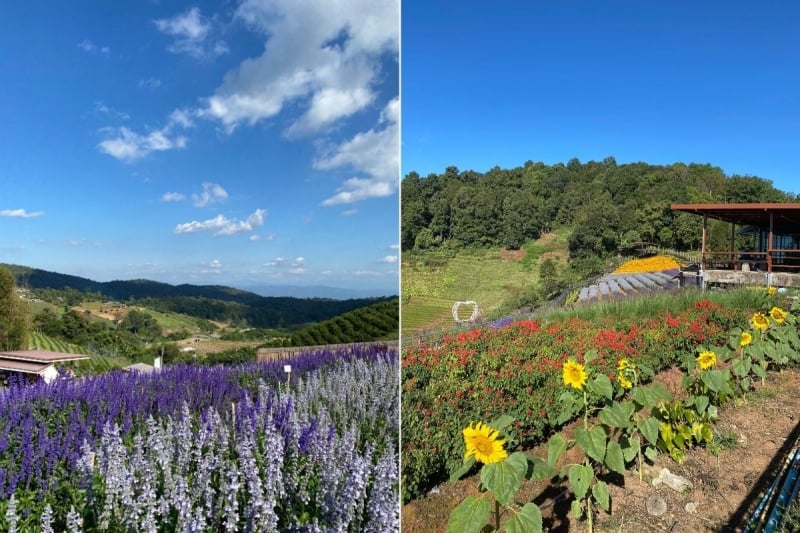
Image credit: Li Ann
If you’re looking for a quick mountain escape from Chiang Mai, Mon Jam (also spelt Mon Cham) is a dream. Located in Mae Rim district, this mountaintop village is famous for its flower gardens, cool breezes, and sweeping valley views. Local Hmong villagers grow vegetables and flowers here year-round, but the scenery becomes particularly lush after the rains.
During the low season, you can enjoy misty mornings, vibrant blooms, and far fewer crowds. If you’re visiting on a day trip, unwind with a herbal tea at a café with panoramic views. To soak it all in, go glamping in a geodesic dome or bamboo hut overlooking the clouds.
Getting there from Singapore:
Fly directly to Chiang Mai, then hire a car or take a songthaew to Mon Jam (about 1 hour).
3. Doi Ang Khang, Chiang Mai
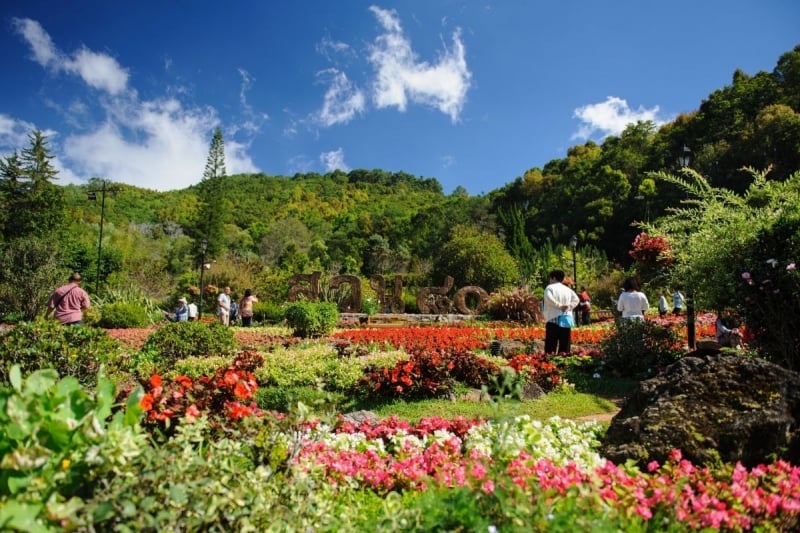
Image credit: TAT Media Assets
Doi Ang Khang is a mountain retreat known for its temperate climate, experimental Royal Agricultural Station, and peaceful hill tribe villages. The elevation (1,400m above sea level) makes it one of the coolest places in Thailand year-round.
You can expect wild orchids along the trails and misty mornings that wrap the landscape in a dreamlike calm. Visit nearby Ban Nor Lae for traditional hill tribe experiences, or cosy up in a lodge surrounded by clouds.
Getting there from Singapore:
Fly to Chiang Mai, then drive about 3–4 hours north to Doi Ang Khang. A 4WD is recommended, especially during rainy season.
4. Phu Langka, Phayao
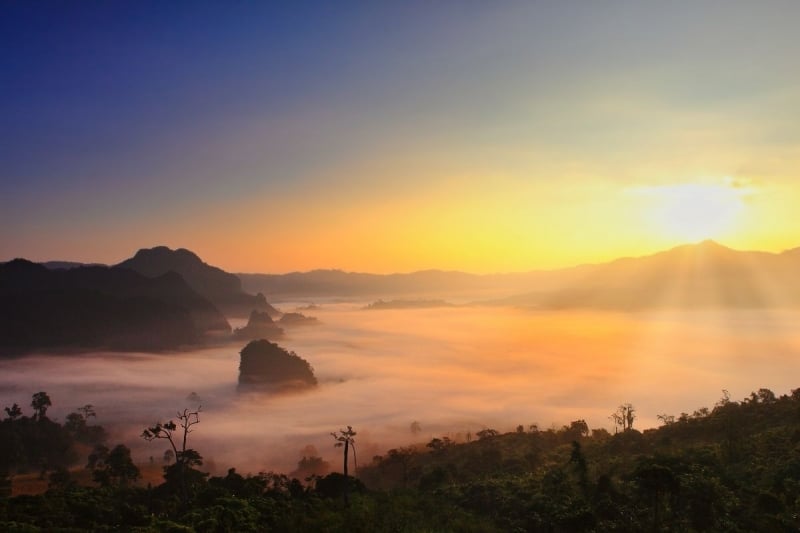
Image credit: TAT Media Assets
Phu Langka is one of northern Thailand’s best-kept secrets. Located in Phayao province, this village overlooks surreal limestone karsts rising from rolling farmland and is best viewed at dawn when mist fills the valleys like a dreamscape.
The rainy season adds a mystical atmosphere to the landscape, and wildflowers bloom along hiking trails. Stay in one of the rustic resorts perched on the ridgeline for unobstructed views of the sunrise, “sea of fog”.
Getting there from Singapore:
Fly to Chiang Rai, then drive 2–3 hours southeast to Phu Langka. A motorbike or rental car is useful for exploring the area.
5. Chiang Rai-Mae Fa Luang Garden
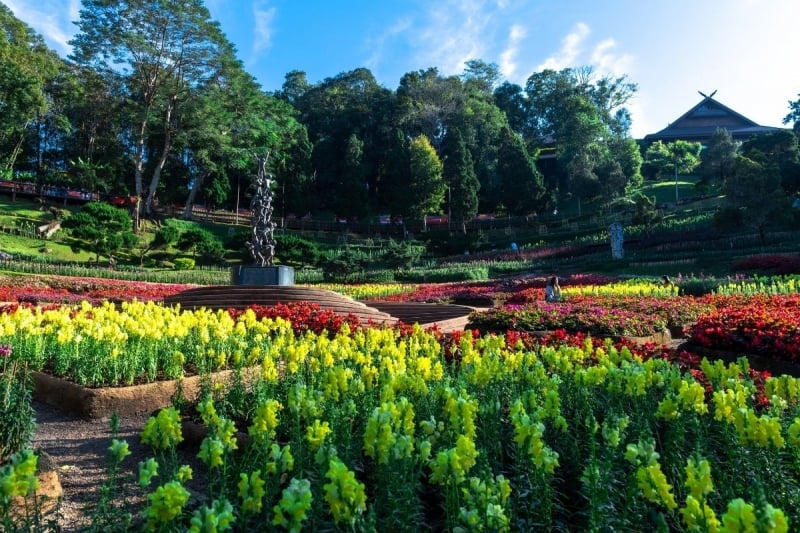
Image credit: TAT Media Assets
Perched high in the Doi Tung hills, Mae Fa Luang Garden is one of northern Thailand’s most breathtaking floral displays. Founded by Princess Srinagarindra, the garden is located on what was originally an important route and a rest stop for opium caravans. Today, it’s a peaceful sanctuary filled with manicured flower beds, fountains, and European-style landscaping.
During the rainy season, the gardens explode with colour and the surrounding forest becomes extra lush. Mist often drapes the mountain slopes, creating a romantic, storybook atmosphere. After exploring the grounds, don’t miss a visit to the nearby Doi Tung Royal Villa for panoramic views and a glimpse into royal life.
Getting there from Singapore:
Fly to Chiang Rai, then hire a driver to drive about 1.5 hours to Mae Fa Luang Garden.
6. Mae Kampong, Chiang Mai
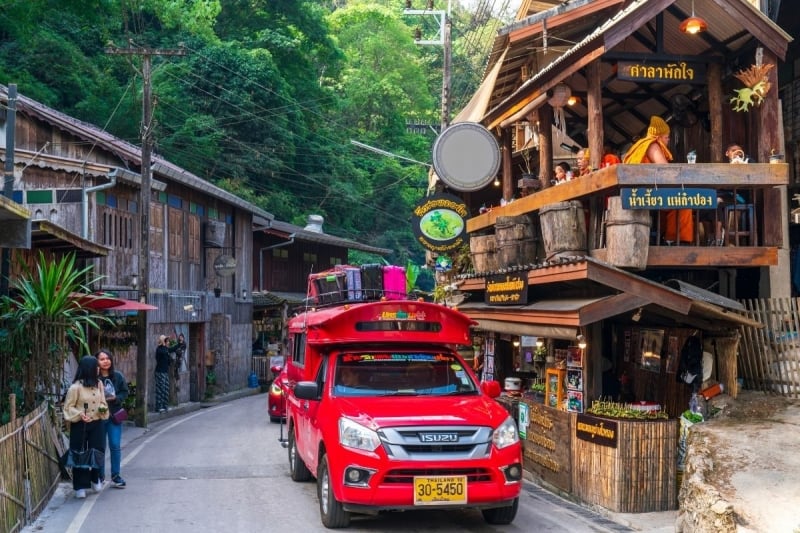
Image credit: TAT Media Assets
Tucked in a cool mountain valley east of Chiang Mai city, Mae Kampong is an eco-village famous for its laid-back vibe and community-based tourism. The entire village seems to be built into the forest, with wooden houses lining the river, surrounded by towering trees and ferns.
During the low season, the waterfalls roar to life, the air turns refreshingly crisp, and the coffee shops feel especially cosy. Join a local homestay, hike to the seven-tiered Mae Kampong Waterfall, and wind down with a herbal steam bath in the cool mountain air.
Getting there from Singapore:
Fly to Chiang Mai, then drive or take a songthaew about 1.5 hours to Mae Kampong.
7. Ban Jabo, Mae Hong Son
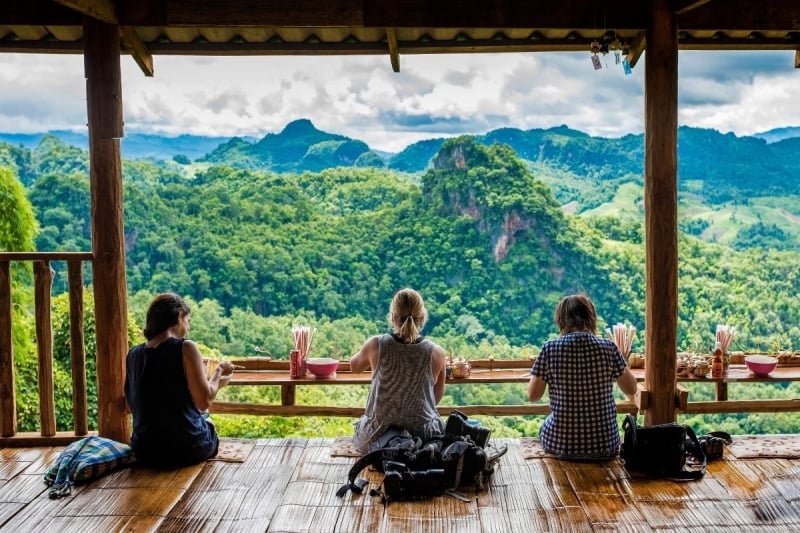
Image credit: TAT Media Assets
Ban Jabo is a Black Lahu village perched high above a sweeping valley in Pang Mapha district. Its claim to fame? A noodle shop where you can eat breakfast while dangling your legs over a wooden platform with jaw-dropping views.
The mist rolls in like waves during the rainy season, adding a dramatic flair to the morning vista. Cultural immersion is easy here as locals offer homestays, traditional crafts, and nature walks into the surrounding karst hills.
Getting there from Singapore:
Fly to Chiang Mai, then drive 4–5 hours to Ban Jabo via Pai and Pang Mapha.
8. Ban Mae Klang Lueng, Doi Inthanon
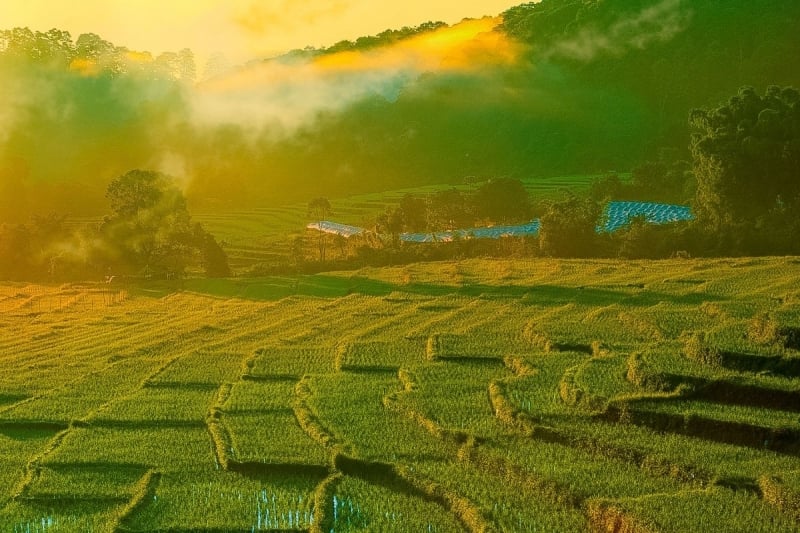
Image credit: TAT Media Assets
Located near the peak of Doi Inthanon (Thailand’s tallest mountain), Ban Mae Klang Lueng sits above the clouds. This Karen hill tribe village is known for its flower farms, strawberry patches, and access to the Royal Project greenhouses.
In the low season, waterfalls like Wachirathan and Siriphum are the most powerful, while the cool air and fog give the village a mysterious allure. This mountain village is a must for nature lovers who want to escape the tropical heat.
Getting there from Singapore:
Fly to Chiang Mai, then drive around 2 hours to Ban Khun Klang via Doi Inthanon National Park.
9. Pang Ung, Mae Hong Son
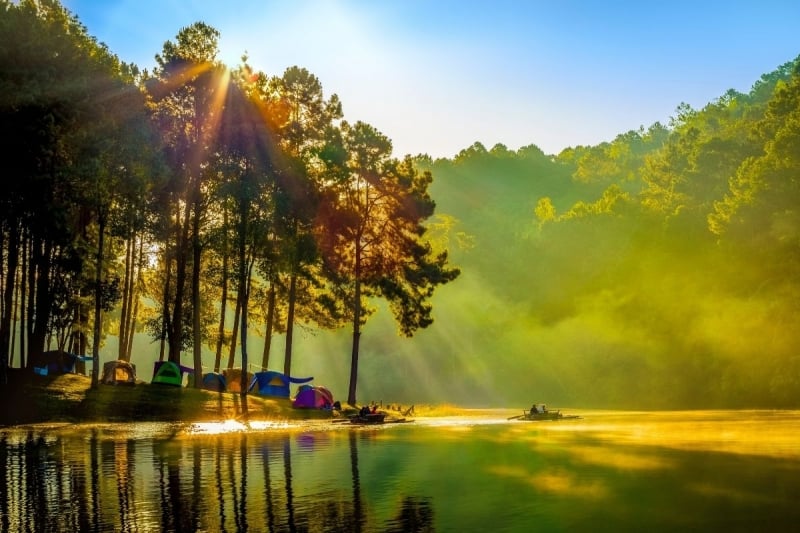
Image credit: TAT Media Assets
Often called the “Switzerland of Thailand,” Pang Ung is a pine-fringed reservoir tucked in the mountains of Mae Hong Son. The tranquil lake reflects the misty sky, and in the mornings, rowboats cut across the mirror-like water in total silence.
Low season means quiet trails, fresh mushrooms in the local cuisine, and mist-draped forests ideal for tent camping or glamping. Pang Ung is the kind of place where doing nothing feels deeply fulfilling.
Getting there from Singapore:
Fly to Chiang Mai, then take a connecting flight or bus to Mae Hong Son. Pang Ung is about 1.5 hours by car from Mae Hong Son town.
10. Phu Thap Boek, Phetchabun
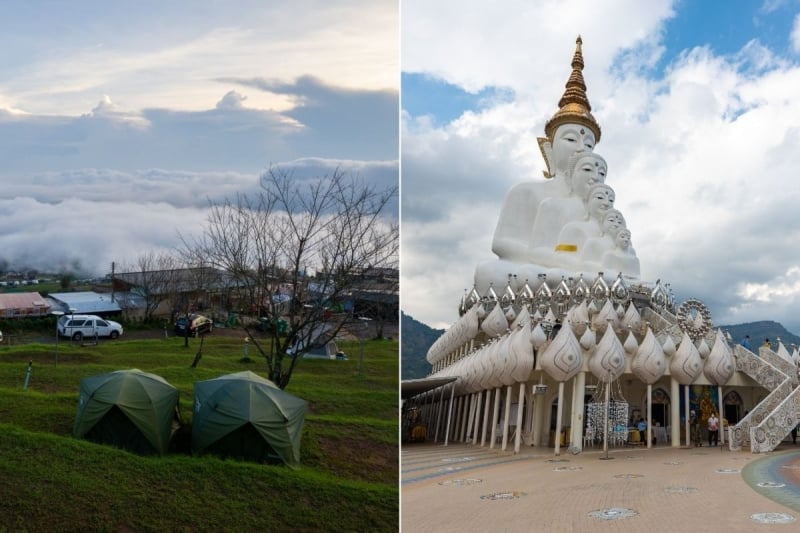
Image credit: TAT Media Assets
Phu Thap Boek is the highest peak in the Phetchabun Mountains, surrounded by endless rolling hills planted with giant cabbages. It’s also famous for its “cloud ocean” effect, where mist blankets the entire valley like whipped cream.
Low season is prime time for misty sunrises and vivid green fields. Located in Khao Kho near Phu Thap Boek, Wat Phra That Pha Sorn Kaew is a must-visit temple known for its five stacked white Buddhas and intricate mosaics that shimmer like a kaleidoscope. This spiritual landmark adds a peaceful and visually stunning stop to your misty mountain journey.
Getting there from Singapore:
Fly to Bangkok, then travel overland for about 6–7 hours via bus or rental car to Phu Thap Boek.
11. Ban Num Juang, Phitsanulok
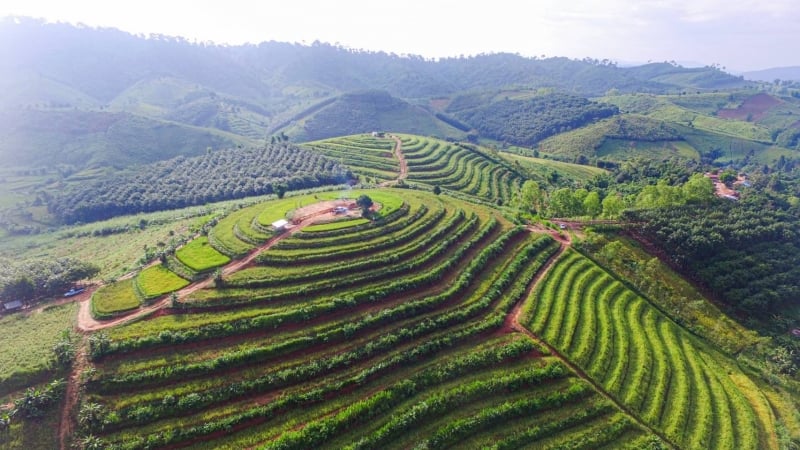
Image credit: Tanate Anudit
For those craving tranquillity and unspoiled charm, Ban Num Juang delivers in spades. Surrounded by wave-like hills blanketed in green, Ban Num Juang offers a peaceful retreat for those looking to reconnect with nature. This quiet village in the hills of Phitsanulok turns lush and misty during the rainy season.
Life moves slowly here, think sunrise strolls, chatting with friendly locals, and sipping hot tea as clouds drift over the peaks. It’s an underrated gem where the rain brings out the best in the land and its people.
Getting there from Singapore:
Fly to Bangkok, then continue to Phitsanulok by train, bus, or domestic flight. From Phitsanulok town, Ban Num Juang is around a 2-hour drive into the highlands.
12. Banmung, Phitsanulok
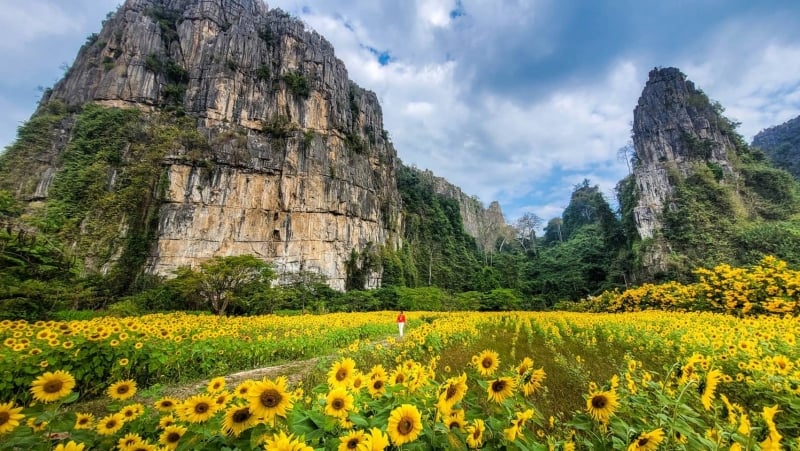
Image credit: Tanate Anudit
Rediscover nature and adventure at Banmung in Phitsanulok! This rustic retreat, located in the district of Noen Maprang, Phitsanulok Province, is ideal for camping, hiking, and experiencing Thailand’s natural beauty up close. Tucked among serene forests and hills, it offers a peaceful escape from city life, especially during the green season when the landscape comes alive with fresh rain and cool breezes. Pitch a tent, enjoy a campfire, and wake up to birdsong and misty morning views.
Getting there from Singapore:
Fly to Bangkok, then continue to Phitsanulok by train, bus, or domestic flight. From Phitsanulok town, it’s about a 1.5-hour drive to Banmung Camp.
Thailand’s mountain villages transform during the low season, offering serene escapes, stunning scenery, and cultural encounters without the crowds. If you’re looking for a different kind of Thailand, one that is cool, quiet, and wrapped in mist, these villages are your perfect rainy-season retreat!
Brought to you by Tourism Authority of Thailand




